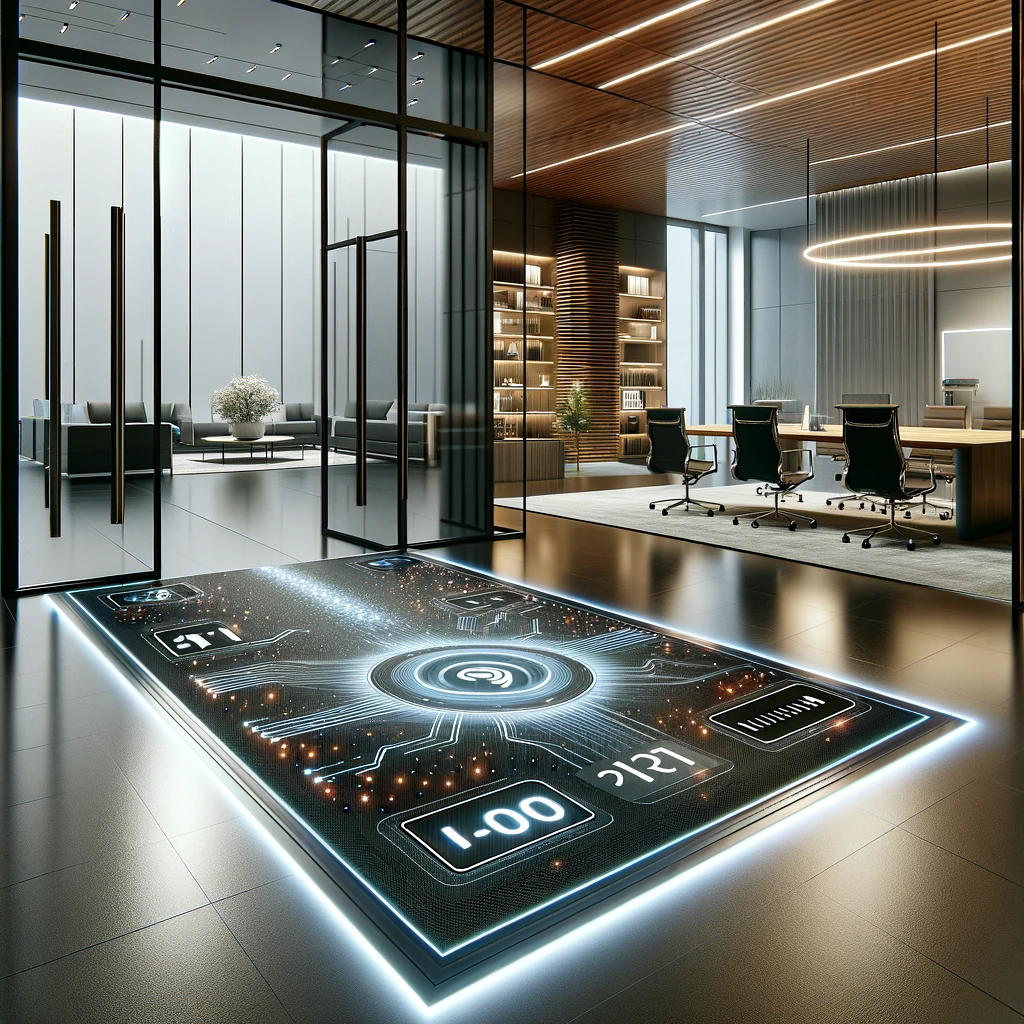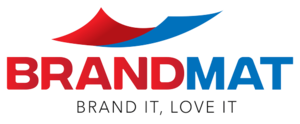Introduction Unlock the potential of your spaces with our high-performance Rubber Rolls Flooring, now available…

The Evolution and Future of Floor Matting: Embracing Innovation and Sustainability
In the quest for cleaner, safer, and more aesthetically pleasing spaces, the significance of something as seemingly mundane as floor matting cannot be overstated. This article delves into the fascinating world of floor mats, tracing their evolution from simple dirt barriers to sophisticated, high-tech solutions that cater to a myriad of needs across residential, commercial, and industrial sectors.
I. Introduction
A. Definition and Importance of Floor Matting
Floor matting refers to any piece of fabric or material placed on a floor with the primary purpose of removing dirt and moisture from footwear, enhancing safety by preventing slips, and in many instances, contributing to the décor of a space. Beyond these functional roles, floor mats have evolved to address specific demands such as reducing fatigue, controlling dust, and even integrating smart technology for enhanced user interaction and data collection.
B. Overview of the Floor Mat Industry’s Evolution
Historically, floor mats were simple, utilitarian items made from natural materials like reeds and grasses. However, the industry has witnessed a remarkable transformation, driven by advancements in materials science, manufacturing techniques, and a deepening understanding of human ergonomics. Today, the floor mat industry is a vibrant sector characterized by innovation and a commitment to sustainability and consumer health.
II. New Materials in Floor Matting
A. Sustainable and Eco-Friendly Materials
1. Recycled materials
To reduce environmental impact, manufacturers are increasingly turning to recycled plastics, rubber, and textiles as raw materials for rubber mats. These recycled mats offer a double advantage: they keep waste out of landfills and require less energy to produce than their virgin counterparts.
2. Biodegradable options
Biodegradable mats, made from natural fibers like coir, jute, and cotton, are gaining popularity. These materials not only decompose naturally at the end of their life cycle but also offer a rustic aesthetic that appeals to eco-conscious consumers.
B. High-Performance Materials
1. Enhanced durability
The development of new synthetic materials has led to floor mats that are more durable, capable of withstanding heavy foot traffic and harsh environmental conditions without deteriorating.
2. Improved resistance to elements
Advanced treatments and coatings are now applied to mats to enhance their resistance to moisture, UV light, and chemicals, making them suitable for use in a wider range of environments.
III. Design Innovations
A. Aesthetic Trends
1. Customization and personalization
Manufacturers are offering bespoke solutions, allowing customers to create mats with logos, patterns, and colors that align with their branding or personal style preferences. This trend is exemplified by the popularity of logo mats, which serve as a branding tool as well as a welcome gesture to visitors.
2. Integration with interior design
Floor mats are no longer afterthoughts in interior design. They are being designed to complement or even enhance the aesthetic appeal of the spaces they occupy. Welcome mats have become a focal point of entrance areas, offering both a warm greeting and a taste of the interior style.
B. Functional Innovations
1. Anti-fatigue mats
Developed to reduce discomfort for individuals who stand for long periods, these mats are a boon for workers in retail, healthcare, and manufacturing sectors. Interlock rubber mats provide a modular, ergonomic flooring solution that can be customized to fit any space, reducing fatigue and enhancing worker productivity.
2. Smart mats with IoT integration
Emerging smart mats equipped with sensors can track foot traffic, monitor environmental conditions, or even alert staff to spills and hazards in real-time, opening new possibilities for safety and efficiency.

IV. Emerging Market Needs
A. Health and Safety Regulations
1. Impact on material and design choices
Stringent health and safety regulations are influencing the choice of materials and design of floor mats, pushing manufacturers to prioritize non-toxic, fire-resistant, and slip-resistant features.
2. Compliance and certifications
Certifications from recognized bodies have become crucial for manufacturers, serving as proof of compliance with industry standards and regulations.
B. Industry-specific Solutions
1. Healthcare
In healthcare, mats must meet rigorous hygiene and safety standards, leading to products that are antimicrobial and easy to clean. Bar mats and yoga mats, for instance, are designed with materials that resist bacteria and are easy to sanitize, catering to the unique needs of these environments.
2. Manufacturing
For manufacturing settings, heavy-duty mats that withstand industrial wear and tear, while providing ergonomic benefits to workers, are in demand.
3. Hospitality
The hospitality industry seeks mats that combine durability with design, enhancing both safety and the overall aesthetic of their spaces.
V. Consumer Preferences Evolution
A. Residential Sector Trends
1. Comfort and safety
Homeowners are increasingly looking for mats that not only ensure safety but also offer comfort underfoot, reflecting a broader trend towards wellness within the home.
2. Design and aesthetics
The desire for home décor that reflects personal style extends to floor mats, with consumers favoring designs that complement their interior themes.
B. Commercial Sector Trends
1. Branding through customization
Businesses view floor mats as an opportunity for branding, preferring customized options that reinforce their identity right at the doorstep.
2. Maintenance and durability
Commercial spaces prioritize mats that are easy to clean and maintain, and that retain their appearance over time, reducing the need for frequent replacements.
C. Industrial Sector Trends
1. Safety and ergonomics
Industrial settings demand mats that address safety concerns, such as preventing slips and falls, and reduce worker fatigue through ergonomic design.
2. Heavy-duty requirements
The need for mats that can withstand extreme conditions and heavy use is paramount in industrial environments, pushing the development of robust, high-performance solutions.
VI. Challenges and Opportunities
A. Supply Chain and Manufacturing Challenges
The global supply chain disruptions have highlighted the need for more resilient manufacturing and distribution strategies within the floor mat industry.
B. Technological Integration and Innovation Opportunities
The integration of technology, such as IoT and advanced materials, presents an opportunity for the development of smart, multifunctional mats that can meet the evolving needs of consumers.
C. Market Expansion and New Segments
As consumer awareness of the benefits of high-quality floor matting grows, there is potential for expansion into new markets and segments, including niche industries with specific requirements.
VII. Case Studies and Examples
A. Success Stories of Innovation in Floor Matting
Innovative companies have successfully introduced floor mats made from ocean plastics, combining sustainability with functionality and design excellence.
B. Adoption of New Materials and Designs in Different Sectors
The healthcare sector’s rapid adoption of antimicrobial mats and the hospitality industry’s embrace of aesthetically pleasing, durable mats exemplify the sector-specific tailoring of floor matting solutions.
VIII. Future Outlook
A. Predictions for Material and Design Trends
The trend towards sustainability and customization is expected to continue, with advances in materials science enabling the creation of even more eco-friendly and personalized matting solutions.
B. Anticipated Changes in Consumer Behavior
Consumers’ increasing prioritization of health, safety, and environmental sustainability will drive demand for innovative floor matting solutions that address these concerns.
C. Potential for Growth in New Markets
Emerging markets, particularly in developing countries where awareness and demand for quality floor matting are growing, represent a significant opportunity for the industry.
IX. Conclusion
The floor matting industry stands at a crossroads of tradition and innovation, where the drive for sustainability, consumer health, and technological integration is reshaping the very fabric of the sector. As we look towards the future, it is clear that the industry’s ability to adapt and innovate will not only determine its success but also its impact on the global push for more sustainable, health-conscious, and efficient living and working environments
